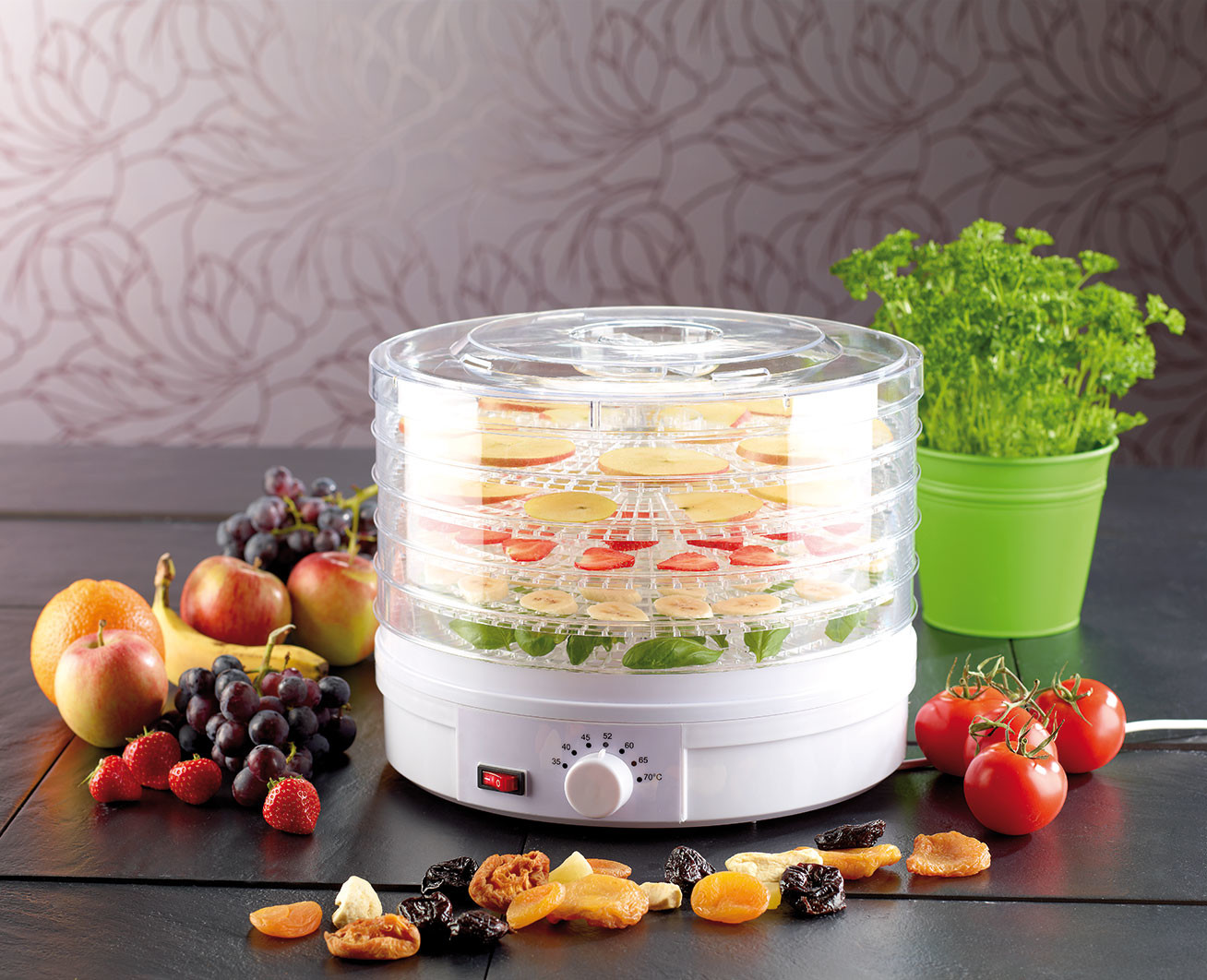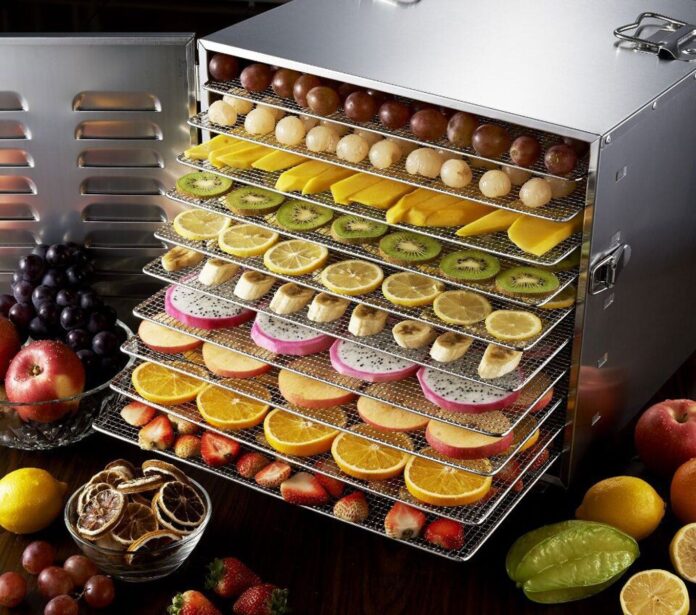In a world where food preservation has become not just a necessity but an art, the role of food-dryers has evolved from a simple tool to a game-changer in the culinary and agricultural industries. Whether for commercial use in Australia or small-scale operations worldwide, the humble food dryer or dehydrator has unveiled a world of possibilities, flavours, and nutritional benefits. This comprehensive overview will guide you through everything you need about food-dryers, their commercial utilization, key features, and their transformative impact on the food industry.
Understanding the Basics of Food Dehydration
Food dehydration, an age-old technique modernized by technology, effectively reduces moisture content in food, dramatically slowing the spoilage process. This method works by circulating warm, dry air around the food items and gently extracting water. The absence of water impedes the growth of bacteria, yeasts, and moulds, which are primary agents of food decay. Importantly, this process does more than preserve.
It intensifies the natural flavours of food, making dehydrated products like fruits, vegetables, and meats highly sought after for their enhanced taste profiles. Food dehydration is lauded for its ability to retain the nutritional value of the original produce, making it a healthy preservation choice.
Using controlled temperature and airflow ensures that foods are dehydrated uniformly without cooking or altering their fundamental structure. This precise method not only maintains the integrity of the food but also allows for the creation of a wide array of dried products, from crunchy snacks to ingredients for culinary creations.
The Rise of Commercial-Dehydrators in Australia
In recent years, there has been a remarkable surge in the utilization of commercial-dehydrators across Australia, a trend driven largely by a burgeoning understanding of health, nutrition and sustainable food practices. There is a heightened realization among the population that dehydration makes food nutritious and durable and contributes to reducing waste, given its extended shelf-life.
These commercial dehydration devices are gaining traction in various sectors, from micro-scale organic farming initiatives incorporating dried fruits and herbs into their products for increased value and longevity to massive food manufacturing corporations, harnessing new opportunities in areas like dehydrated meat and pet food production. This isn’t just an exercise in novelty or innovation. It represents a fundamental shift in food management practices towards greater sustainability and security.
By integrating commercial dehydration techniques into their business models, Australian enterprises are effectively diminishing waste while augmenting the lifespan of their products. Simultaneously, they are tapping into a rising consumer demand for nourishing, enduring food choices. As such, this development mirrors a broader societal acknowledgment of dehydrators’ integral role in fostering efficiency and ecological preservation.
Key Features to Look For In a Commercial Dehydrator
When selecting a commercial-dehydrator, several essential factors must be carefully considered to ensure it meets your business needs. The dehydrator’s capacity is crucial; it should align with your current production levels while offering the flexibility to scale up as your operations expand.
Another critical feature is the control system—look for commercial dehydrators with precise temperature and airflow adjustments to guarantee uniform drying, which is vital for maintaining the quality and consistency of your products. Energy efficiency is also a top consideration, directly impacting operational costs. Models that minimize electricity consumption without compromising performance can offer significant long-term savings.
Ease of use and maintenance are important; a user-friendly interface and straightforward cleaning processes can enhance productivity and ensure the machine’s longevity. Consider the versatility of the dehydrator, ensuring it can handle various food types, which allows for a broader range of product offerings from your business. By prioritizing these key features, you can select a commercial-dehydrator that is not only efficient and cost-effective but also adaptable to the dynamic needs of your operations.
How Food-Dryers Are Changing the Game for Australian Businesses
In the competitive landscape of Australia’s food industry, food-dryers are emerging as indispensable tools for businesses looking to innovate and thrive. These machines enable the production of unique, dehydrated goods that cater to a growing demographic of health-conscious consumers, setting companies apart in a crowded market. By transforming perishable items into durable, shelf-stable products, businesses are expanding their offerings and significantly cutting down on waste, aligning with global sustainability initiatives.
The ability to process surplus produce into dehydrated form has become a strategic advantage, allowing for the conservation of resources and reduction of loss due to spoilage. Furthermore, the operational efficiency gained through commercial-dehydrators streamlines production processes, enhancing profitability and enabling companies to meet the increasing demand for nutritious, convenient, and eco-friendly food options. This shift towards innovative preservation methods underscores a broader trend towards sustainability and efficiency, marking a new era in food processing and distribution in Australia.
Advantages of Using a Dehydrator Machine over Traditional Methods
Employing a dehydrator-machine for food preservation offers many benefits over conventional drying techniques like air or sun drying. One of the key advantages is the machine’s ability to maintain a consistent, controlled environment. This eliminates the uncertainties and variabilities of outdoor conditions, ensuring a reliable and uniform drying process that isn’t subject to the whims of weather.
Moreover, dehydrator machines significantly reduce the risk of bacterial growth and contamination, a common concern with traditional methods. These units are designed to operate at optimal temperatures that preserve the food and protect against pathogens. Dehydrator-machines expedite drying, making it considerably faster than conventional methods.
This speed enhances productivity and allows for a quicker turnaround from preparation to packaging, which is ideal for businesses looking to streamline their operations. Another noteworthy advantage is the machine’s capacity for year-round use, removing the limitations imposed by seasonal changes. This capability ensures a steady production flow, independent of external weather conditions, thereby boosting efficiency and predictability in food preservation endeavours.
Popular Types of Commercial-Dehydrators and Their Uses
Commercial-dehydrators are designed to meet the varying demands of businesses, from small-scale producers to large manufacturing plants. Among the most widely used models are the shelf, tunnel, and vacuum dehydrators, each catering to specific needs? Shelf dehydrators are versatile and are preferred for their adaptability, making them a fit for operations that process various foods in smaller batches.
They are particularly effective for drying fruits, herbs, and artisanal meat products. Tunnel dehydrators, on the other hand, excel in high-volume environments. Their continuous drying process is ideal for large-scale production of snacks, pet foods, and products requiring consistent output over extended periods. Vacuum dehydrators stand out for their ability to preserve the quality of sensitive products.
Operating at lower temperatures is excellent for maintaining the nutritional content, colour, and flavour of foods like berries, mushrooms, and delicate herbs. Each type of dehydrator offers a unique set of capabilities, empowering businesses to select a model that aligns with their production needs and goals, whether it’s maximizing output or preserving the delicate qualities of their products.
Tips for Maximizing Efficiency and Quality in Dehydration
Ensuring the efficiency and quality of dehydration processes requires a multi-faceted approach that pays attention to numerous key aspects. One strategy is the uniform slicing of food, which can greatly assist in consistent and even drying. Uniform pieces of food ensure that the heat is distributed equally and drying time is optimized. Non-uniform slices often dry unevenly, resulting in lower-quality products.
It’s crucial to pre-treat certain food items, such as fruits, before dehydration. This process might include coating fruits with lemon juice or ascorbic acid solution, both known to preserve the colour of the food and slow down oxidation while drying. This means the final product retains more of its natural colour and appeal, reducing loss in nutrient value.
Another strategy is the careful monitoring of the dehydration environment. Regular tracking of temperature and humidity parameters can greatly influence the effectiveness of the drying process. Both these variables can affect the texture and quality of dehydrated food; hence, the environment should be maintained within the optimal range suitable for the specific food type.
 Navigating the Regulatory Landscape for Commercial Dehydrators Australia
Navigating the Regulatory Landscape for Commercial Dehydrators Australia
When integrating commercial-dehydrators into Australian businesses, navigating the regulatory landscape is crucial to ensure compliance with local and national standards. Australia has stringent guidelines and standards to safeguard food safety and quality, which any entity operating commercial-dehydrators must adhere to. These regulations ensure that dehydrated products are safe for consumption and produced under hygienic conditions. Businesses using commercial dehydrators Australia must also be aware of the importance of labelling.
The Australian Consumer Law requires that food products are correctly labelled with ingredients, allergen warnings, and best-before dates. This is particularly pertinent for dehydrated foods, where the concentration of certain ingredients can increase, and potentially impacting consumers with allergies or dietary restrictions. Furthermore, environmental regulations may impact the operation of commercial-dehydrators, especially concerning energy use and emissions. Selecting energy-efficient models can help businesses minimize their environmental footprint and comply with sustainability goals, which is increasingly becoming a priority in Australian industry regulations.
FAQ’s
How does a food-dryer work?
A food-dryer works by circulating warm air around the food at a low temperature. This process effectively removes moisture from the food, preventing the growth of bacteria and fungi. The controlled heat ensures that the nutritional content of the food is retained, resulting in dehydrated snacks or ingredients.
What types of food can be dried using a food-dryer?
A versatile food-dryer can dry various foods, including fruits like apples, bananas, and berries, vegetables such as tomatoes and peppers, herbs, and even meat for jerky. Some models come with multiple trays, allowing users to dehydrate different types of food simultaneously.
Is a food dryer energy-efficient?
Yes, food dryers are generally energy-efficient compared to traditional methods of food preservation, such as canning or freezing. They use minimal energy to maintain a consistent temperature, and their long-term use can lead to cost savings due to reduced food waste.
Can a food-dryer help in reducing food waste?
Absolutely. A food-dryer is an excellent tool to reduce food waste by extending the shelf life of perishable items. It allows users to preserve excess produce, preventing it from spoiling and being thrown away. Dehydrated foods can be stored for longer durations without losing their nutritional value.
Are food-dryers easy to clean?
Most food-dryers come with removable and dishwasher-safe trays, making them relatively easy to clean. Regular maintenance involves cleaning the trays, ensuring proper airflow, and wiping down the machine’s interior. This user-friendly feature adds to the convenience of using a food-dryer in the kitchen.
Conclusion
As we’ve journeyed through the world of food-dryers and commercial-dehydrators, it’s clear they offer transformative benefits for businesses and consumers alike. These machines extend the shelf life of foods and enhance their flavour and nutritional value. For Australian enterprises, embracing this technology means tapping into an eco-friendly approach to food preservation, reducing waste, and meeting the growing demand for healthy, sustainable food options. With the right equipment and practices, the potential for innovation in food dehydration is boundless, marking a significant step forward in food processing and preservation evolution.
| Related Business Listings |
| Contact Directory |
| Local Business Profiles |
